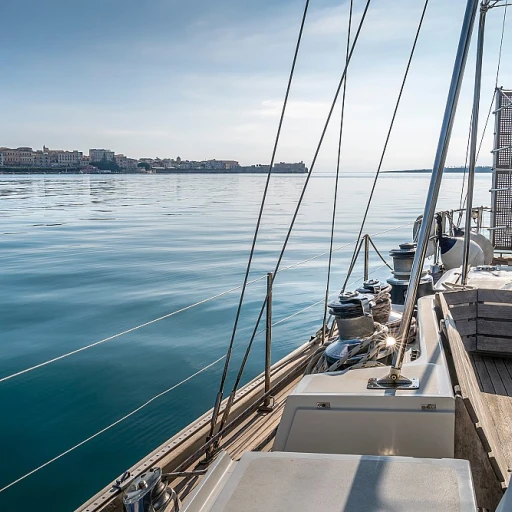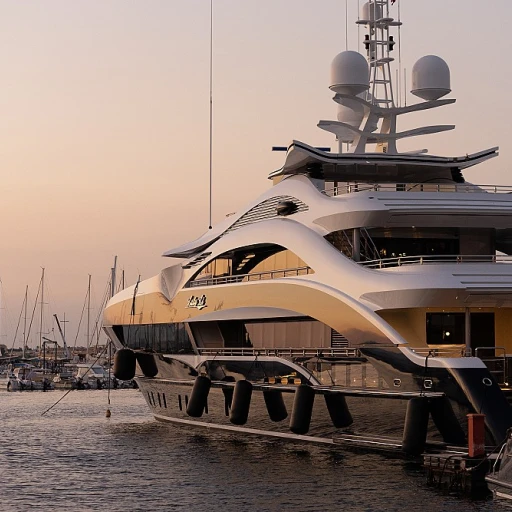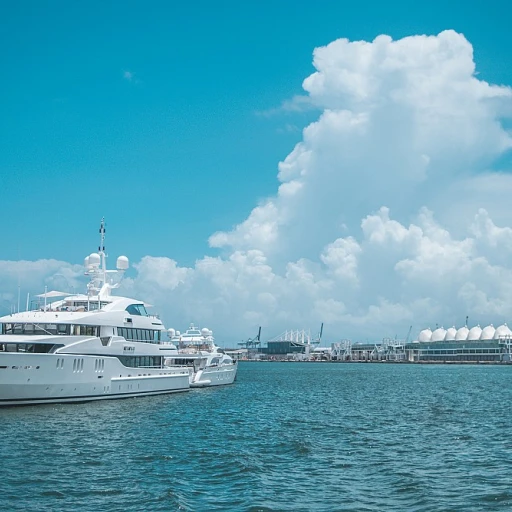Understanding Boat Seat Posts
Basics of Boat Seat Posts
Understanding boat seat posts is crucial for any yacht enthusiast keen on optimizing their vessel's design and functionality. These posts play a vital role in providing stability and adjustability in seating arrangements, enhancing both comfort and utility while on water adventures. There are several types of seat posts and pedestals, from snap lock variations to the more traditional swivl eze configurations, each with unique attributes, yet all serving the primary function of securing seating. Boat seat posts are typically installed by being securely joined to the deck or base of the boat. The location where these posts are installed, whether at the front or rear, affects accessibility and utility. The presence of a pedestal post can elevate the seating experience, allowing passengers or the captain to have a better vantage point, especially handy during activities like bass fishing. For those curious about the technical aspects of installation and removal in these setups, accessing forums or technical guidance is often key. Industry resources such as exploring the market for side console boat parts provide insights not just into part specifications but also practical installations, such as the use of a pipe wrench for base adjustments. Whether talking about a small post boat or an imposing bass boat, understanding these components contributes to a broader awareness of how each element fits into the luxury and performance puzzle of yacht ownership.Why Easy Removal Matters
The Importance of Effortless Seat Post Removal
The ability to remove boat seat posts with ease has become an increasingly acknowledged necessity in the yacht industry. It not only simplifies maintenance but also enhances the overall functionality and versatility of a vessel's interior. Vessels equipped with easily removable seat posts manifest a notable difference in user experience. But why exactly is this important for yacht enthusiasts?
A frequent topic on various forums dedicated to enhancing your pontoon experience is the challenge of dealing with a stuck seat pedestal. Traditional seat posts often require a pipe wrench or similar tool for removal, which can be cumbersome and lead to damage.
In challenging areas such as the rear location of a bass boat or under a deck with limited access, having a quick-release mechanism like a snap lock for the seat pedestal can significantly reduce the effort and time involved. Imagine being on a successful bass fishing trip and needing to remove a seat pedestal seamlessly to clear up space or rearrange seating; this kind of flexibility is invaluable.
Moreover, ease of removal can even affect safety. In emergency situations, being able to swiftly clear out the seating space may be vital. And in times when thorough cleaning or repairs are needed, the last thing an enthusiast wants is to wrestle with a stubborn post base or swivl eze lock.
The demand for innovations in seat post design has prompted yacht manufacturers to integrate advanced removable features, such as the snap lock seat pedestal systems, which have joined the ranks of essential boating innovations. Such advancements clearly demonstrate the ongoing commitment to improving nautical experiences through optimized seat solutions.
Innovations in Removable Seat Post Design
Innovative Designs Making Waves
The yacht industry has seen a surge in innovative designs aimed at simplifying the removal of boat seat posts. These advancements are not just about aesthetics but focus on functionality and ease of use. As yacht enthusiasts know, the ease with which a seat post can be removed or adjusted significantly impacts the overall boating experience.
One of the key innovations is the introduction of the snap lock mechanism. This design allows for quick release and secure locking of the seat post, making it ideal for both leisurely cruising and bass fishing adventures. The snap lock feature is particularly beneficial for those who frequently adjust their seating arrangements, ensuring that the post remains firmly in place during use but can be easily removed when needed.
Another noteworthy development is the swivl eze system, which combines a rotating base with a quick-release mechanism. This allows for greater flexibility in seat positioning and enhances comfort during long hours on the water. The swivl eze design is especially popular among bass boat owners who require rapid seat adjustments while navigating different fishing spots.
Manufacturers are also focusing on improving the durability and stability of seat pedestals. By utilizing high-quality materials and engineering precision, these new designs ensure that the seat posts can withstand the rigors of marine environments. The introduction of reinforced pedestal post bases and corrosion-resistant finishes has further enhanced the longevity and reliability of these components.
As the industry continues to evolve, the focus remains on creating solutions that are not only innovative but also user-friendly. The integration of modern technology with traditional craftsmanship is setting new standards for what yacht enthusiasts can expect from their seating solutions. These advancements are a testament to the industry's commitment to enhancing the boating experience, making it more enjoyable and hassle-free for everyone on board.
Challenges in the Yacht Industry
Overcoming the Constraints in Yacht Seating Implementation
In the ever-evolving yacht industry, the process of integrating removable seat posts presents a handful of challenges. These obstacles are essential to address to meet the growing demand for flexible and adaptable boat seating solutions. One of the primary hurdles is achieving a seamless snap lock mechanism for the seat pedestal, ensuring robust post removal without compromising safety. A quality lock seat system is critical to cater to various seating arrangements, especially in configurations like bass boats or a bass fishing setup. The precision required in the seat pedestal and base alignment often necessitates bespoke engineering. Manufacturing discrepancies can lead to misalignments that cause difficulties in removing or reinstalling the posts. Therefore, standardizing the diameter and length of seat posts and ensuring compatibility with various pedestal post systems are fundamental factors industry players must consider. In addition, the materials used in manufacturing the boat seat posts should withstand harsh marine environments. Innovations such as anodized aluminum and corrosion-resistant alloys have been implemented to combat this challenge. Furthermore, the adoption of universally fitting designs helps in accommodating different boat models, whether it's a bass cat or another type of fishing vessel. Forum discussions highlight users' concerns about specific issues like a post's stability in the pedestal and ensuring no unwanted movement during rear locations or demanding marine conditions. Hence, durability and reliability in design are ongoing areas for development. Join these insights with the necessity for convenient tools like a pipe wrench for seat post transitions, and it's clear that the industry is at a crucial point. Stakeholders are encouraged to keep pushing the boundaries of innovation to create seamless boating experiences.Case Studies of Successful Implementations
Proven Implementations in the Yachting Community
The process of post removal has been a point of focus in various successful implementations across the boating community. By examining these cases, yacht enthusiasts can garner insights into what works best for seat post adjustments.
One particularly notable example is the application of snap lock mechanisms. This system allows for effortless maneuverability, making it a popular choice in bass boats where quick transitions between fishing spots are crucial. The ability to swiftly remove or reinstall a seat without tools like a pipe wrench has become an appealing feature, promoting efficiency.
In forums dedicated to post removal, such as those discussing the Swivl-Eze solutions, members often share their experiences and offer solutions to common issues. From anecdotes about overcoming stubborn pedestal post locks to tips for correctly aligning a pedestal onto the base—these shared stories become invaluable resources.
A recurring theme in these forums is the innovation brought about by creating a proper alignment within the post hole or ensuring the seat pedestal fits snugly into the boat seat's lock seat system. Simple adjustments in the rear base location can make all the difference in ensuring stability and ease of use.
An interesting case surfaced in the bass fishing niche, where the need for lightweight, yet sturdy posts was paramount. Enthusiasts in this area of the yacht industry have often utilized innovations like composite seat posts that offer both strength and ease of post removal, addressing both the weight and the durability concerns induced by harsh marine environments.
In sum, the effective implementation of these innovations is not just about convenience; it is about ensuring a seamless user experience and adapting to the varying needs of yacht enthusiasts around the globe.













